How foam blocks are made. Do-it-yourself foam concrete production: manufacturing technology. Pros and cons of making it yourself.
- Casting technology
- Cutting technology
- Basic recommendations for making foam blocks
The main question before starting construction of a private house is related to saving money. The materials differ from each other not only appearance, technical qualities, but also price offers. A proportional relationship can be distinguished between all indicators: the better the building material, the higher its price.
Due to its convenience, practicality and high performance characteristics, foam concrete is one of the most popular building materials.
Today foam blocks are very popular. They have very high technical qualities, thanks to which the house will last a long time, and the walls will keep the room warm in winter and cool in summer. It is worth noting the rather high price of this material. In order to reduce the cost of purchases, you can equip the production of foam concrete at home.
Main characteristics of foam concrete
The main property of foam concrete is its porous structure. In production, this is achieved using a special foaming agent. Thanks to this structure, foam blocks differ large sizes and relatively light weight. Such indicators have a positive effect on the construction process, which will be carried out much faster. The main advantage of producing foam concrete at home is that it can be made to any size.
Return to contents
Basics of production technology
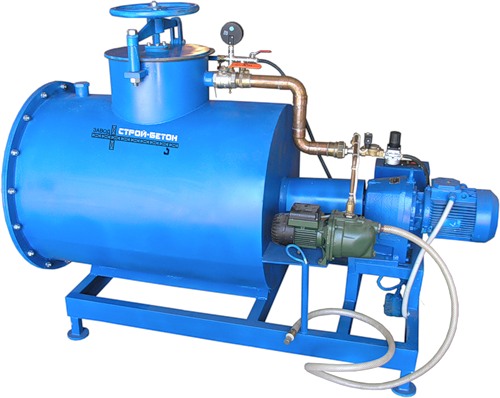
To make a foam block, you need to have an idea of the technological process, be familiar with all the nuances of the work and follow the recommendations of specialists.
The production of foam concrete can be divided into 3 stages:
- Preparation of a special foaming agent solution.
- Preparing a mixture based on cement and sand.
- Pouring the finished mass of foam concrete into special molds.
Return to contents
Materials and tools for making foam concrete
In order to make foam concrete directly at a construction site or in your yard, you need to prepare materials. To mix all the components, you must use a concrete mixer. Otherwise, the consistency may not be uniform.
For work you will need materials such as:
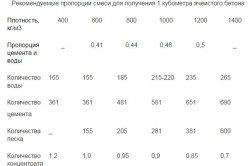
- a pre-prepared form into which foam concrete will be poured;
- foam generator - a device that creates air-mechanical foam;
- cement M400 or M500;
- fine sand;
- foaming agent;
- hardener.
Depending on the proportion of materials used, the density of the finished foam block will depend. To obtain medium-density blocks, it is better to use a 1:1 ratio of sand and cement. The foaming agent should be taken as follows: per 1 kg no more than 4 g.
During preparation, it is recommended to use high-quality cement of grade 400 or 500. As for sand, it must be very clean, without any clay impurities. In addition, the sand must be very fine, the fraction should not exceed 2 units. After cement-sand mortar ready, a foaming agent is gradually introduced into it in doses.
To prepare a foaming agent with your own hands, you need to use:
- 150 g sodium hydroxide;
- 1 kg rosin;
- 60 g wood glue.
All ingredients must be crushed. While heating the mixture, bring it to a homogeneous consistency. To obtain a working solution ready mix diluted with water. It should be noted that it is necessary to use a foam generator.
Return to contents
Block formation stage: features
The last stage of foam concrete production is pouring the solution into the prepared form.
Special cassettes or formwork can be used as a form, which are quite easy to make yourself. The walls of the molds are lubricated with a special product that does not contain fat. This will allow you to plaster the surface of foam concrete walls without any problems.
Today there are two methods by which blocks are produced: casting and cutting.
Return to contents
Casting technology
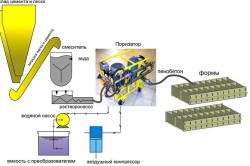
This technique involves the use of a form into which the prepared solution is poured. In this state, the solution dries until it reaches the required strength. The average height of such a cassette is 60 cm.
The main disadvantages of the technology include:
- deformation of the planes (this moment may be present if thin metal was used for the forms and, under the weight of the solution, it deviated slightly from the original shape);
- there is a possibility of a “hump” forming at one end;
- When dismantling the formwork, the corners of the blocks may be damaged.
Such moments are associated with poor quality lubrication of metal walls or insufficient strength of foam concrete. The main advantage of this technology is the absence of expensive equipment for cutting blocks.
Return to contents
Cutting technology
This technology involves 2 stages. The first is pouring the finished solution into a large container. After achieving the required strength, using a special device, the blocks are cut to the required dimensions. The main advantages of this method:
- perfectly accurate dimensions;
- evenness of all planes;
- the “hump” is cut off;
- great view.
Disadvantages include hardening time and cutting. If you miss the moment when it is necessary to cut, you may not end up with the best option.
Foam concrete is a lightweight cellular concrete that has a porous structure due to the presence of many bubbles (or pores) throughout its volume. Because foam concrete has a low density, it is not suitable for use as a structural material. However, the strength and insulating properties of foam concrete make it an ideal material for sound and heat insulation. Adding sand can increase the density of foam concrete, making it fire-resistant and reducing its ability to absorb water. It is obtained by hardening a solution consisting of cement, sand, water and a foaming agent. This article proposes a method for making foam concrete with your own hands.
Foam concrete is a relatively environmentally friendly and affordable building material, prices for which are about 2,500 - 4,000 rubles. for 1 m3, however, if you make foam concrete with your own hands, you can save money.
Foam concrete is produced by autoclave and simple, non-autoclave methods, using a concrete mixer and a foam generator. Here we offer a simple method for making foam concrete, without using a kiln.
It should be noted that, despite the apparent simplicity of the manufacturing technology, to obtain foam concrete required quality may require quite a lot of time and money. It will be necessary to find the exact ratio of components, establish production technology, determine best time kneading, holding in molds, drying, etc. However, if everything goes smoothly, then as a result you can save money by making foam concrete yourself to build your own home, or even make money by making it for sale.
What is needed:
- Concrete mixer;
- Sifted river, dry sand;
- High quality cement without impurities;
- Foam generator (you can make it yourself, there are drawings and information on creating a foam generator on the Internet, or you can purchase a ready-made one);
- Foaming agent (you can buy it directly from the manufacturer, or from a company that sells building materials. In Russia, the foaming agent PB 2000 is popular);
- Water;
- Forms for pouring blocks or formwork.
The video demonstrates a homemade foam generator for the production of foam concrete.
DIY foam concrete. Instructions
- Determine the volume of space where you are going to pour foam concrete and calculate the amount of materials required for production. For every 0.5 m 3 of pouring, 100 liters of water with 200 kg of cement and 200 kg of sand are required.
- Mix sand and cement in a concrete mixer.
- Use a chemical foaming agent and a foam generator to create foam. To make 1 m 3 of foam concrete, 500 liters of foam are needed.
- Add water to the mixture in the concrete mixer.
- Add foam to concrete mixer. Foam generators usually have a pump so that the foam can be sent directly to the concrete mixer. To add the appropriate amount of foam to the mixture, determine the foam output rate in l/s. For example, if the output of the generator is 1.5 l/s, and you need to add 250 l of foam to the mixture, then you need the foam to enter the mixer within 166 seconds.
- After this, the materials in the concrete mixer must be mixed well. If the density of the foam concrete is too low, more foam can be added. When checking the density of a wet product, keep in mind that dry concrete will have a lower density.
- Pour the mixture into the mold and let it dry. Then you need to remove it from the mold and keep it for another 16 hours. This mixture can also be poured into formwork.
Note:
The production of foam concrete must be done in a room with a temperature of at least 5°C.
The density of foam concrete intended for sound insulation, suspended ceilings, partitions or prefabricated blocks is 600 - 900 kg/m 3. For decoration and exterior finishing, the density of foam concrete is 1000 - 1200 kg/m 3. Foam concrete with a density of 1200 - 1600 kg/m 3 is suitable for the manufacture of prefabricated panels, as well as for decorating lawns.
Foam concrete blocks are used in the construction of low-rise buildings. This is due to their good sound insulation, environmental friendliness, ease of transportation, processing and other performance characteristics. Many craftsmen are concerned about the question of how to make a foam block.
Experts note that the profitability of manufacturing modules from cellular concrete exceeds 300%. The master does not have to incur large capital investments; the finished material can be used for his own needs or for sale.
A home line for the production of foam blocks will require the installation of the following units:
- compressor – technical specifications equipment must allow it to operate from a standard 220 V electrical network;
- foam generator - can be purchased from companies specializing in the production of foam blocks or made independently;
- forms - the product can be metal (sheet metal 3-4 mm) or plywood (moisture-resistant material enclosed in a metal frame). It is better to use collapsible structures, with folding sides and removable longitudinal and transverse partitions. The size of the casting mold should be small - this is convenient for transportation;
- pump – the choice of device is based on the required performance;
- concrete mixer - optimal volume 80-100 liters.
Multi-level forms negatively affect the quality of the mixture - it will harden poorly
With such equipment a team of two workers can produce 2-3 m³ of concrete per shift. The main difficulty lies in the production of foam. Foaming agents produce much less foam than a high-quality foam generator, and the solution must practically whip at very high speeds.
How to make a foam generator for foam concrete with your own hands?
Before making a foam generator for foam concrete yourself, you need to understand the principle of its operation:
- the foam concentrate solution is fed at an angle of 90° into the mixing chamber;
- the composition is connected to the air flow;
- the mixture, under pressure, passes through a double-cut nozzle;
- At the inlet the composition contracts, at the outlet it expands. The mixture released under pressure is transferred to the foam cartridge, where it breaks down into foam.
 The master can obtain high-quality foam himself, spending a minimum of money on the manufacture of the device. The design implements the principle of paired valves. Shut-off valves serve to shut off the system, while control valves set the density of the foam. Having selected the optimal parameters only once, subsequently you can use only shut-off valves.
The master can obtain high-quality foam himself, spending a minimum of money on the manufacture of the device. The design implements the principle of paired valves. Shut-off valves serve to shut off the system, while control valves set the density of the foam. Having selected the optimal parameters only once, subsequently you can use only shut-off valves.
To assemble a foam generator with a Laval nozzle, all parts must be connected in series:
- solution supply shut-off valve + coupling;
- control valve for supplying the mixture and adjusting the density of the foam + coupling;
- air supply shut-off valve + coupling;
- air supply control valve (allows you to adjust the pressure) + coupling;
- mixing chamber of foam concentrate and air;
- Laval nozzle, d 10 mm. Instead of a nozzle, you can use a washer-jet, but the efficiency of the unit will decrease by 40%;
- foam cartridge;
- nozzle with threaded connection and mesh washer.
To operate the device you need a compressor with a capacity of 0.50 m³ and a pressure of about 6 atm. Foam concentrate, diluted in a separate container (100-200 l), can be supplied using a simple household pump, the “Rucheek” type.
The entire length of the foam cartridge body is filled with rolled nets, for which you can use dish cleaning nets made of stainless steel
For large volumes of work, a pump equipped with a receiver will be required. If the device provides a pressure of about 2 atm, the unit will produce 300-500 l/min, 6 atm – from 600 l/min and more.
Choosing material
To make foam concrete yourself at home, you will need the following components:
- cement – high-quality material without impurities is selected, grade strength is not lower than M400;
- sand – starting from a density of 600 kg/m³, natural or crushed sand is added, but screening may be a better choice, since it is cheaper and more active in concrete. If large grains of sand are mixed into the dough, additional cement will have to be added to it, which will allow the foamed solution to be retained. For thermal insulation modules - 300-500 kg/m³ - this component is not used. It is recommended to sift the sand several times;
- foaming agent;
- hardener.
Foam concrete: composition, proportions
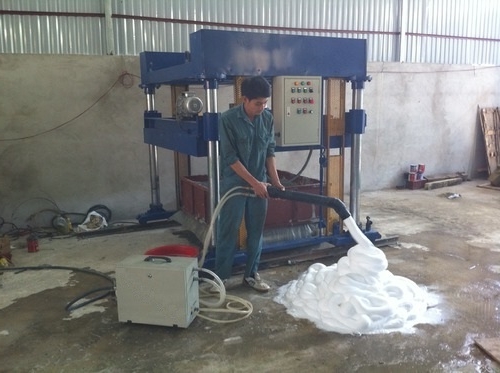 Before you make foam blocks at home, you should familiarize yourself with the proportions for its manufacture.
Before you make foam blocks at home, you should familiarize yourself with the proportions for its manufacture.
To prepare 1 m³ of foam concrete D600 you will need:
- cement PC500 D0 – 320.0 kg;
- sand – 200.0 kg;
- foaming agent for foam concrete – 1.0-1.5 l;
- hardener;
- water – soft, tap water.
To understand how to make foam concrete with your own hands, you should look at the table presented.
| Volume density of foam concrete kg/m³ | 400 | 600 | 800 | 1000 | 1200 | 1400 | 1600 | 1800 |
| Material | ||||||||
| Sand, kg | — | 210.0 | 420.0 | 590.0 | 780.0 | 950.0 | 1130.0 | 1330.0 |
| Cement, kg | 300.00 | 310.0 | 320.0 | 350.0 | 360.0 | 380.0 | 400.0 | 420.0 |
| Water in foam, l | 60.0 | 54.0 | 46.0 | 42.0 | 35.0 | 28.0 | 21.0 | 15.0 |
| Air content, % | 80.00 | 71.00 | 63.00 | 54.00 | 46.00 | 37.00 | 29.00 | 20.00 |
| Water in solution, l | 110.0 | 110.0 | 120.0 | 120.0 | 140.0 | 150.0 | 160.0 | 170.0 |
| Water cement ratio | 0.57 | 0.53 | 0.49 | 0.46 | 0.48 | 0.47 | 0.45 | 0.44 |
| Foaming agent, kg | 1.50 | 1.30 | 1.20 | 1.00 | 0.90 | 0.70 | 0.60 | 0.40 |
| Foam, l | 800.0 | 715.0 | 630.0 | 560.0 | 460.0 | 370.0 | 290.0 | 200.0 |
| Foam concrete mixture, kg | 471,50 | 685,30 | 907,20 | 1103,0 | 1315,90 | 1508,70 | 1711,60 | 1935,0 |
The foam block may poorly gain stripping strength due to the low grade of cement and insufficiently high temperature in the working room
The main cost item is cement, other components will amount to 20-25% of the total cost. The total cost of producing a cube of foam concrete will be 1.6-1.7 tr. However, such costs are acceptable under ideal developments.
In practice, the master will need several trial batches; equipment costs will apply. The easiest way for beginner concrete workers to make high-density blocks D1000. To produce D600/D650 modules of good strength, you can spend a significant amount of money, plus a certain amount of time.
Foaming agent for foam concrete
To prepare a high-quality block, it is better to use synthetic foaming agents. Some craftsmen independently prepare a mixture based on rosin, caustic soda and wood glue (1 kg/150 g/60 g). The starting components are crushed, heated and brought to a homogeneous consistency. The work uses a foam generator.
Implementation of work
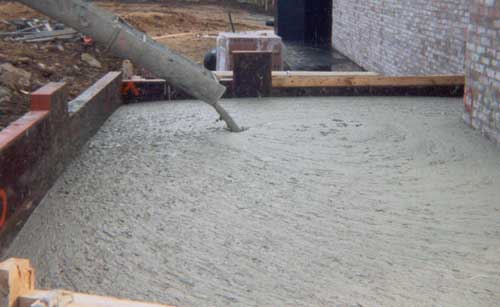 According to the requirements of the foam concrete brand, All components are placed in the mixer - water, cement, sand, after which foam is added to the composition(prepared in a foam generator). The less time spent on kneading, the less destruction the foam will undergo and the better the solution will be. Detailed instructions contains a video about how to make foam blocks at home. If the master uses a regular mixer with movable blades, the foam is mixed for 2-3 minutes.
According to the requirements of the foam concrete brand, All components are placed in the mixer - water, cement, sand, after which foam is added to the composition(prepared in a foam generator). The less time spent on kneading, the less destruction the foam will undergo and the better the solution will be. Detailed instructions contains a video about how to make foam blocks at home. If the master uses a regular mixer with movable blades, the foam is mixed for 2-3 minutes.
How to make foam blocks? When connected to the unit compressed air, concrete can be supplied over a distance of 15-40 m. The finished solution can be poured into formwork or into molds. In the first case, the semi-frozen monolith is cut into blocks. The material must remain in the mold for at least 24 hours, after which it is disassembled, and the modules are transferred to pallets and kept for another 16 hours. When experience in preparing the mixture required in all respects is gained, manual disassembly can be carried out after 12 hours.
The holding temperature should not fall below + 5°C. If the material is produced in winter in an unheated room, it is necessary to install a heat gun. At this stage, a tool such as a foam concrete block grip may be required; It is not difficult to make the device yourself, but due to its low cost, it is better to purchase it.
All reactions occur much faster if the formulation contains a hardener. This helps reduce shrinkage, which is especially important when work is carried out at low temperatures
- Forms for filling must have ideal geometry. Before making a foam block yourself, metal products are lubricated with machine oil, plywood products are covered with polyethylene;
- The optimal drying temperature is 50-60°C, the maturation time of the material at a given temperature lasts 2 days. To create such conditions, steaming chambers are often used;
- calcium chloride accelerates the hardening of foam concrete. It is introduced in a ratio of 1.0-2.0% of the total volume of the working mixture - it allows you to maintain the quality of the block during a temporary drop in temperature (for example, day/night), reduces the likelihood of cracking and reduces water separation;
- To prepare the mixture, it is recommended to use warm water – 25-30°C.
Foam concrete is a material that can be prepared at home with a stable level of quality. However, true skill is developed with experience, and this requires considerable expenses. It takes more than two months to achieve optimal performance through trial batches.
How to make foam concrete with your own hands at home using the simplest equipment is shown in the video:
Today many people are engaged construction work independently, fortunately the modern market can offer a large amount of materials, and on the Internet there is a manual for work for every taste.
Today, one of the latest developments is foam concrete. It is becoming widely popular, so an increasing number of home builders want to make foam blocks with their own hands.
Advantages of foam concrete
Foam concrete is a type of concrete with a cellular porous structure. The advantages over other building materials include the following:
- High thermal insulation properties. Due to the fact that the cells of the material are filled with air, foam concrete retains heat inside during the cold season and does not allow it to pass outside in hot weather. In winter, these properties allow you to save heating costs by 25%.
- Fluidity. This property allows the material to be poured into various forms to produce a variety of workpieces.
- Reliability. The material is not influenced by atmospheric factors, as well as chemical influences.
- Ease. Foam concrete is three times lighter than concrete and two and a half times lighter than brick. Thanks to these characteristics, reduced loads on the foundation and floors are ensured.
- Strength qualities. Having a density of 400-1400 kg/cm³, foam concrete can withstand a compression load of 10-100 kg/cm³.
- Maintaining microclimate. Foam concrete has good air permeability, so it allows you to maintain optimal temperature and humidity levels in the room, allowing the walls to breathe.
- Environmental friendliness. Consists of natural raw materials and does not emit harmful components.
- Soundproofing properties. The material absorbs sound perfectly.
- Fire safety. According to standards, it has the first degree of fire resistance. A fifteen-centimeter thick foam concrete wall can protect against fire for four hours.
- Easy and quick installation. These qualities are ensured by the large size of the blocks and the ease of their processing. An ordinary hand tool will allow you to cut into the desired shape.
DIY foam blocks: equipment and materials

To make foam concrete you will need the following equipment:
- Pressure setting. This type of equipment is a whole simple production complex without the use of a foam generator. A built-in activator is used to mix the components. Since mixing is carried out under pressure, when the solution is unloaded, the air bubbles expand even more, making the mixture lighter and more cellular. This installation makes it possible to produce foam concrete with densities from 500 to 1200 kg/m3 and simultaneously transport it to the construction site.
- Vibrating sieve. The equipment is designed for sorting and sifting ingredients, which allows you to obtain a material that is homogeneous in composition for the production of higher quality products.
- Compressor. Applicable when using a pressure setting.
- Concrete mixer. It is intended for mixing the solution during production without the use of a pressure unit.
- Form for making foam blocks with your own hands. A photo of this design is shown above.
- Foaming agent. Used when using a foam generator. This material has high foam resistance in cement mixture, which makes it possible to transport ready-made foam concrete mass over long distances without damaging the structure.
- Cement.
- Sand.
- Water.
Manufacturing technology
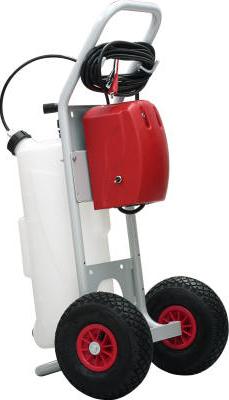
Making foam blocks with your own hands at home is not very difficult; this process is divided into several stages:
- a cement-sand mortar is prepared;
- a foaming agent mixture is prepared;
- formation of foam concrete solution;
- production of foam blocks.
Regardless of whether the material is produced industrially or foam blocks are made by hand, the proportions of the raw materials depend on the density of the foam concrete that needs to be obtained. Manufacturing technology allows you to vary this figure from two hundred to one and a half thousand kilograms per cubic meter. In order to receive average density foam concrete, the following ratio must be observed:
- sand - 1 part;
- cement - 1-1.5 parts;
- water;
- foam concentrate - 4 g per kilo of cement.
Production of cement mortar
To make foam blocks with your own hands at home, cement mortar prepared in the same way as for ordinary concrete:
- Cement grade M400 or M500 without impurities and additives. Cement grinding must have a fraction such that more than 85% of the material passes through a sieve with cell 008.
- Sand is taken no more than two units of fraction size and must be without clay impurities that interfere with its adhesion to cement; quartz sand with a quartz content of more than 85% is ideal. Also, this material must be resistant to the chemical action of cement alkalis. On poor quality sand, high-quality foam concrete simply will not work.
- The water should not contain acid or salt impurities (tap water will do).
After the required ingredients have been measured, they are mixed well until a solution of uniform structure and density is obtained.
Preparation of a foaming agent solution
In order to make foam blocks with your own hands, you can use ready-made, commercially available synthetic foaming agents (for example, Arecom-4), or you can make this material yourself (suitable for use in technology with a foam generator). To do this you will need:
- caustic soda in the amount of 150 g;
- rosin - 1 kg;
- wood glue - 60 g.
These ingredients must be crushed, then the mixture must be heated and stirred until smooth. This solution is added to the previously obtained concrete.
When using a foam concentrate to obtain a working solution, it is mixed with water. Depending on what density of foam concrete you need to obtain, the consumption of foaming agent will be in the range of 0.25-1.2 liters of concentrate per cubic meter of foam concrete mixture.
Foam concrete production
To decide how to make a foam block with your own hands, you need to know that foam concrete can be produced using two technologies: with and without a foam generator. 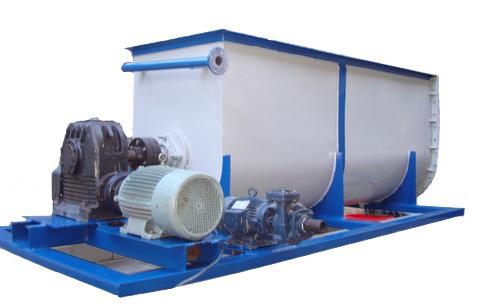
In the first case, the cement-sand mortar is prepared and mixed in a special container, which is equipped with a forced pressure mixer. After the solution is ready, the working mixture of foaming agent prepared in the foam generator is added to it. All components are thoroughly mixed and foam concrete is ready for pouring. This scheme is considered classic.
The second type involves the use of a cavitation unit that does not require the use of a foam generator. In this case, all components are loaded immediately into the mixing container and mixed. Due to the occurrence of excess pressure in the mixer, the foam concrete solution is further supplied from the installation.
In order to speed up the hardening process of foam concrete, special accelerators are added to the cement-sand mortar. Such a component can be calcium chloride, which is added at the rate of 1.5% by weight of cement.
Obtaining foam blocks in ready-made forms
When the concrete is ready, it is poured into prepared forms. Before pouring, their internal surfaces are lubricated with special oil-free compounds. The molds can produce both blocks of given sizes and large elements, which are then sawed on band sawing machines.
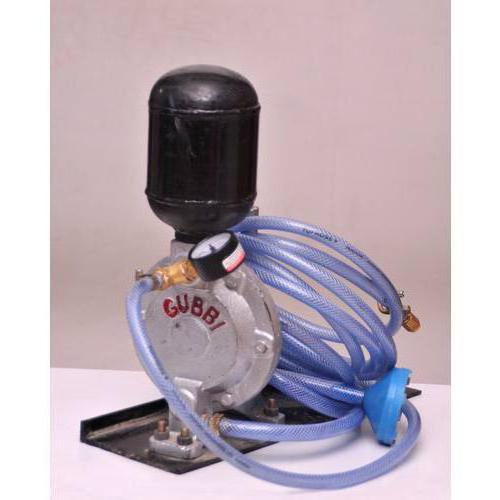
Ready-made metal molds with standard dimensions of the resulting foam blocks are available for sale - 60x30x20 cm. You can mount them yourself.
The advantages of ready-made metal forms include the following:
- Quick removal of finished elements due to simple disassembly.
- Do-it-yourself foam blocks are obtained with precise geometric shapes.
- Due to the collapsible design, the molds are compact and easy to transport.
- They are durable, due to the material from which they are made.
Collapsible cassette molds allow you to fill thirty blocks at a time. One structure requires 1.08 m³ of foam concrete.
Self-construction of a mold for foam blocks
Plus them self-made in order to make foam blocks with your own hands, the fact is that in this case the builder is not limited to standard sizes. It is recommended to install forms with a number of cells of 40 pieces. 
The material for constructing the forms can be plywood, boards, metal sheets or strips. The main thing is that it is possible to build a cellular box of the required dimensions.
When making a mold, you must follow several rules:
- The structure should be single-level, since foam concrete hardens worse on the lower layers.
- The length of the box being made should be a multiple of the width of the blocks, and the height - their height (or vice versa).
The production of the mold begins with the formation of the bottom, the dimensions of which are established by calculation depending on the parameters of the blocks; it is also necessary to take into account the thickness of the partitions.
Then the partitions are attached to the bottom and connected to each other with fasteners corresponding to the material of the form. Spacers and corners will not work here. If the form is made of plywood or wood, then after completion of the work the cells are covered with plastic film to prevent absorption of foam concrete and facilitate the process of removing the finished elements.
The blocks must be dried for 48 hours at a temperature of +50 °C.
Despite the fact that today foam blocks are no longer considered a new product on the building materials market and the demand for them is increasing significantly every day, the price for this building material does not plan to decrease. Therefore, many people come up with the idea of organizing their own right at home.
In this article we will talk about how to make it at home, what materials, and labor resources what will be needed for this, and whether it is possible to make money on it by investing a minimum of funds.
Before you make a foam block at home, you will have to spend a lot of money. Firstly, you need to purchase or manufacture the necessary equipment and equipment, as well as purchase materials.
The following equipment will be required:
A steam generator capable of producing at least 200 liters per minute.
- Compressor installation.
- Mixer hopper. For beginning entrepreneurs, a unit with a power of 2.2 kW and a working volume of about 280 liters is sufficient.
- Mold for standard blocks 200x300x600mm.
- Auxiliary instruments: pressure gauges, pumps.
A ready-made set of such equipment can be purchased in special stores or made to order. Making an individual order for equipment for the production of foam blocks is much more expensive, so we recommend resorting to the second option only when home production has reached full capacity.
How to make a perogenerator with your own hands
Note that you can make a foam generator yourself, since the cost of ready-made devices is too high and not everyone can afford to buy one. Foaming components are also available on the construction market, but they are ineffective, since foam can be obtained from them only at very high speeds.
To make your own foam generator, first of all, you will need a housing with a mesh, a container, hoses, a pump and a compressor. The principle of operation of the steam generator is as follows: water and a foaming element are mixed in a container. The resulting mixture enters the housing along with the air supplied by the compressor. Thus, when the solution hits the mesh, it forms foam. The optimal foam density should be about 80 g per liter.
Materials for the production of foam concrete at home
The answer to the question of how to make a foam block at home implies not only a description of the production technology itself, but also a list of equipment and materials that you will need. So, having all the above equipment, to produce 1 cubic meter (or 720 liters of foam) you need:
- Cement. On average, about 300 kg is required. Cellular concrete (this is another name for blocks) can have different densities, therefore, for the production of foam concrete for different purposes and densities, cement of different brands is needed. Which ones are determined by State Standards and Technical Conditions.
- Purified sand, river: about 200 kg.
- Water: 100 liters + 50 liters for foam.
- Foaming agent (synthetic or from natural ingredients): - about two liters, depending on the density of the blocks.
- Hardener.
- Mold lubricant.
But purchasing equipment and materials is only half the battle. Beginners still have a lot of experiments to do on preparing foam, brands and dosage of components, amount of water, mixing and holding time in the formwork, drying modes of finished blocks. Thus, it is believed that beginners have the best luck with the production of high-density foam blocks - from D1000. And in the process of manufacturing foam blocks of the D600-650 brand, only on experiments you can spend an amount that will exceed the cost of manufacturing the equipment. (Not to mention time).
How to make foam blocks at home: production technology
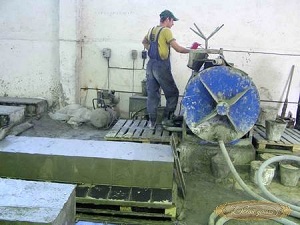 To obtain high-quality foam blocks, it is recommended to use cement grade 400 (no less) and exclude any impurities. In the production of thermal insulating foam blocks with a density of 300-500 kg/m3, sand is not used at all. To make denser foam blocks, natural or crushed sand is used.
To obtain high-quality foam blocks, it is recommended to use cement grade 400 (no less) and exclude any impurities. In the production of thermal insulating foam blocks with a density of 300-500 kg/m3, sand is not used at all. To make denser foam blocks, natural or crushed sand is used.
To produce foam blocks, it is necessary to use foam with a certain density. The quality of the resulting foam can be checked by turning a bucket of foam upside down. If it is held inside the bucket, then it is of good quality. (For example, foam blocks made from foam with a density of 10 g per liter will not be durable).
The components loaded into the mixer: water and are thoroughly mixed, and then a foaming element is added to them. The higher the mixing speed, the better the quality of the foam block.
Giving the blocks the required shape
You can give the foam the desired shape in one of two ways: 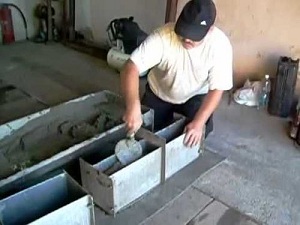
- pour the foam into already prepared forms, usually factory ones;
- use collapsible formwork with folding sides (foam is poured into the formwork, and then, before it completely hardens, it is cut into separate blocks). The mold can be disassembled no earlier than one day after production.
- IN home production It is better to use screenings for foam blocks, since it is quite active at a lower price.
- The cost of self-made foam blocks is affected by the size of the grains of sand: when large fractions get into the solution, you have to add more cement.
- After removing the foam blocks from the molds and placing them on pallets, you need to let them “settle” for about 16 hours.
- The temperature in the room where foam blocks are made by hand should not be below 5 degrees Celsius.
 Evidence of falsification of Russian history discovered
Evidence of falsification of Russian history discovered How they live in a monastery: confession of a nun
How they live in a monastery: confession of a nun Hatred towards Putin and his insane corruption is brewing in Russia
Hatred towards Putin and his insane corruption is brewing in Russia